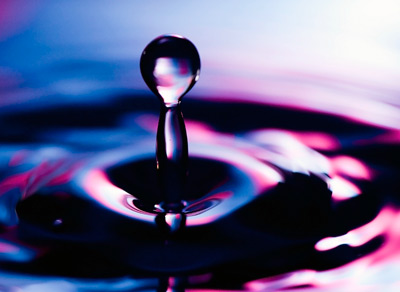While reverse-osmosis units are among the more practical, affordable means for producing purified tap water suitable for sensitive reef systems, there’s no question that they tend to generate a lot of waste water relative to the volume of purified product. In fact, they often produce upwards of four gallons of waste water for every one gallon of purified water. It’s only natural for conservation-oriented hobbyists to look for ways to reclaim this waste water and put it to meaningful use rather than send it swirling down the drain.
But finding realistic ways to use all that water isn’t as simple as it seems, especially if you have a relatively large aquarium system and, therefore, need to produce a hefty amount of RO water on a fairly regular basis.
The usual advice is to use the waste water to give your plants or lawn a drink. These are certainly valid options, but let’s face it, you’d have to have an awful lot of plants to keep pace with all the waste water produced. And as far as watering the lawn is concerned, I’m sure someone more inventive than I (which isn’t saying much) could find ways to do this efficiently using RO waste water, but I haven’t figured out a method that would work for my yard yet.
I do have a decent-sized back yard with terraced landscaping, so I’ve got more than enough thirsty outdoor plants to water through summer and possibly into fall depending on the weather. However, Ohio tends to be quite wet in spring, so the plants don’t need any help from me at that time of year, and winter around these parts is bone-chillingly cold and usually snowy, putting all the plants into dormancy, so I’m not apt to be out watering then either. I also have houseplants to water year round, but again, they can only soak up so much before root rot spirits them away.
So where does that leave me or anyone else who has more RO waste water on their hands than they know what to do with? Looking at it from a practical standpoint, here are my thoughts on the quandary:
It’s not an all-or-nothing proposition
By this, I mean that reclaiming some RO waste water is better than none. Don’t beat yourself up if you can’t find a good use for every drop and have to send some down the drain. Think of your RO system as another water-using utility like your dishwasher or clothes washer (but instead of using water to produce clean dishes or clothes, you’re using it to make pure water for your reef system) and do your best to reduce the waste as much as possible.
You’ll need to get creative
As I noted with the plant watering example above, no single use is likely to consume all the waste water your RO system generates, but figuring out multiple uses around the house can certainly make a dent. In addition to watering, here are a few other waste-water uses you may or may not have considered:
- Soaking/pre-rinsing dishes and silverware bound for the dishwasher
- Washing the car
- Mopping floors
- Cleaning countertops
- Topping off the swimming pool
- Flushing toilets
- Partially filling the bathtub
With a little creativity, you can expand this list considerably. Or, if you can’t come up with any good uses right away, you could always just run the waste-water line into a good-sized storage container to collect it and use the water as ideas occur to you.
You can reduce your water consumption elsewhere
If you’re still not satisfied with the amount of RO waste water diverted down the drain, you could always compensate by cutting your household water consumption in other areas, for example taking a shower instead of a bath, taking shorter showers, postponing washing clothes until you have a full load, etc. You’ve heard of “carbon credits”? Think of these as ways to accumulate “water credits.”
RO systems vary in their waste output
Shop around and you should be able to find RO systems—or upgrades to systems—that create more gallons of product water per day (e.g., 150 GPD) and less waste. There are even zero-waste RO units on the market nowadays. As I understand it, rather than sending the waste water down the drain, these units pump it to the home’s water-heating system.



